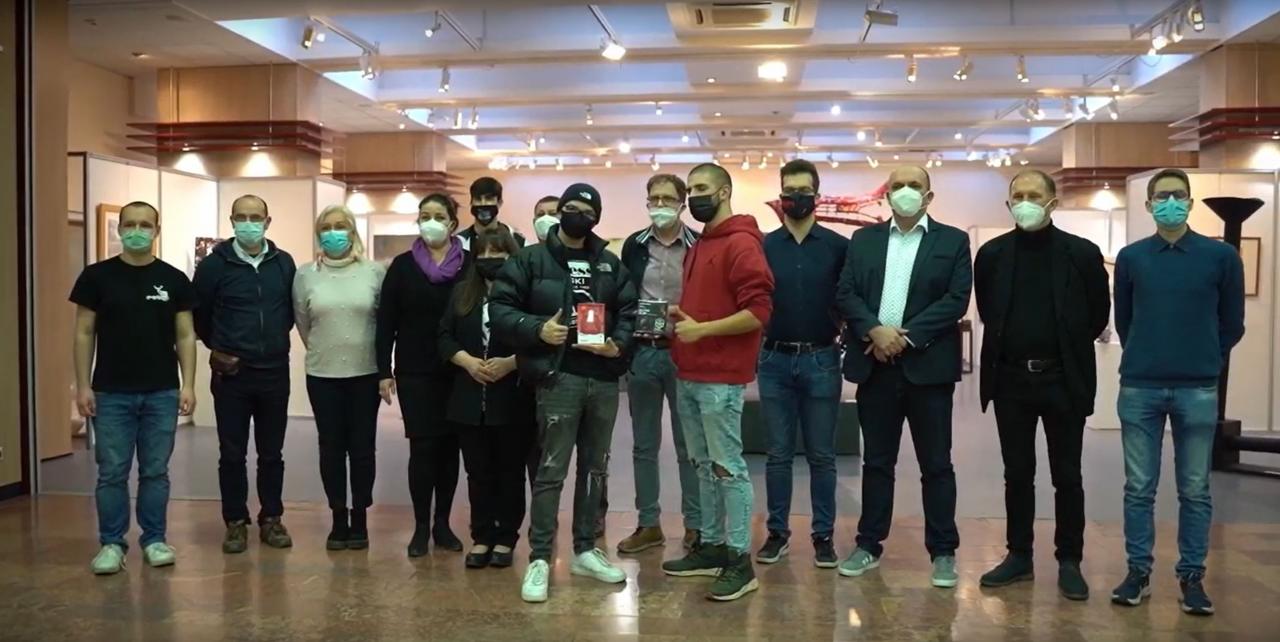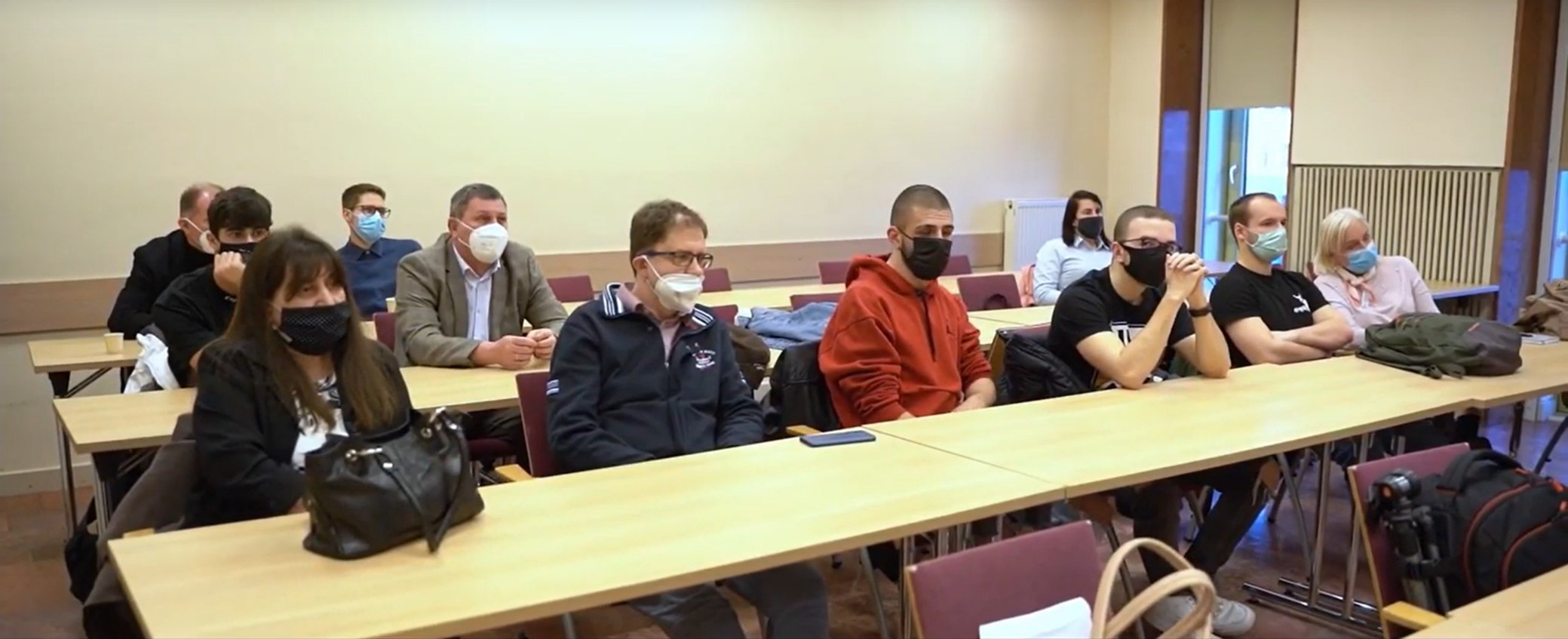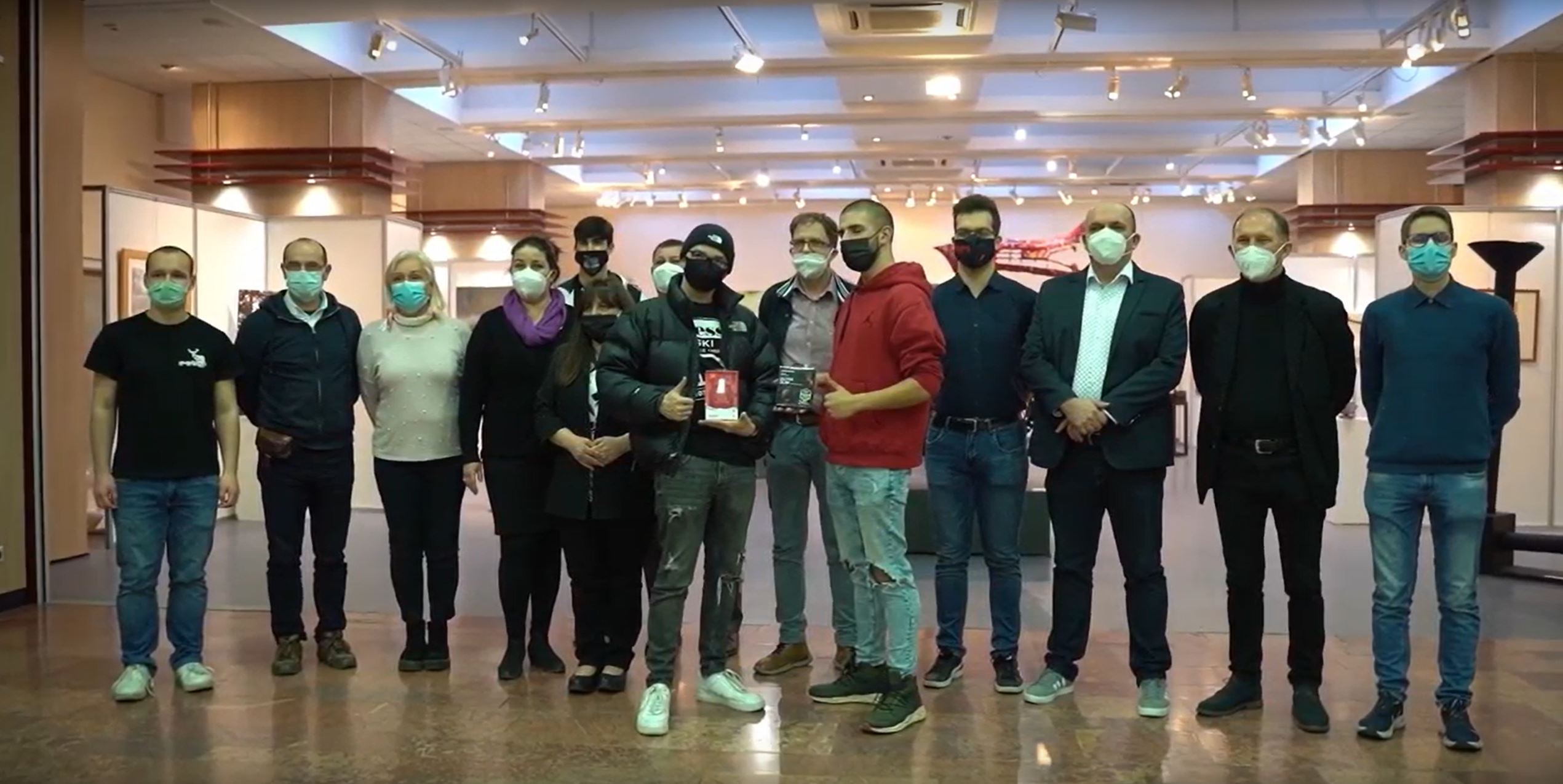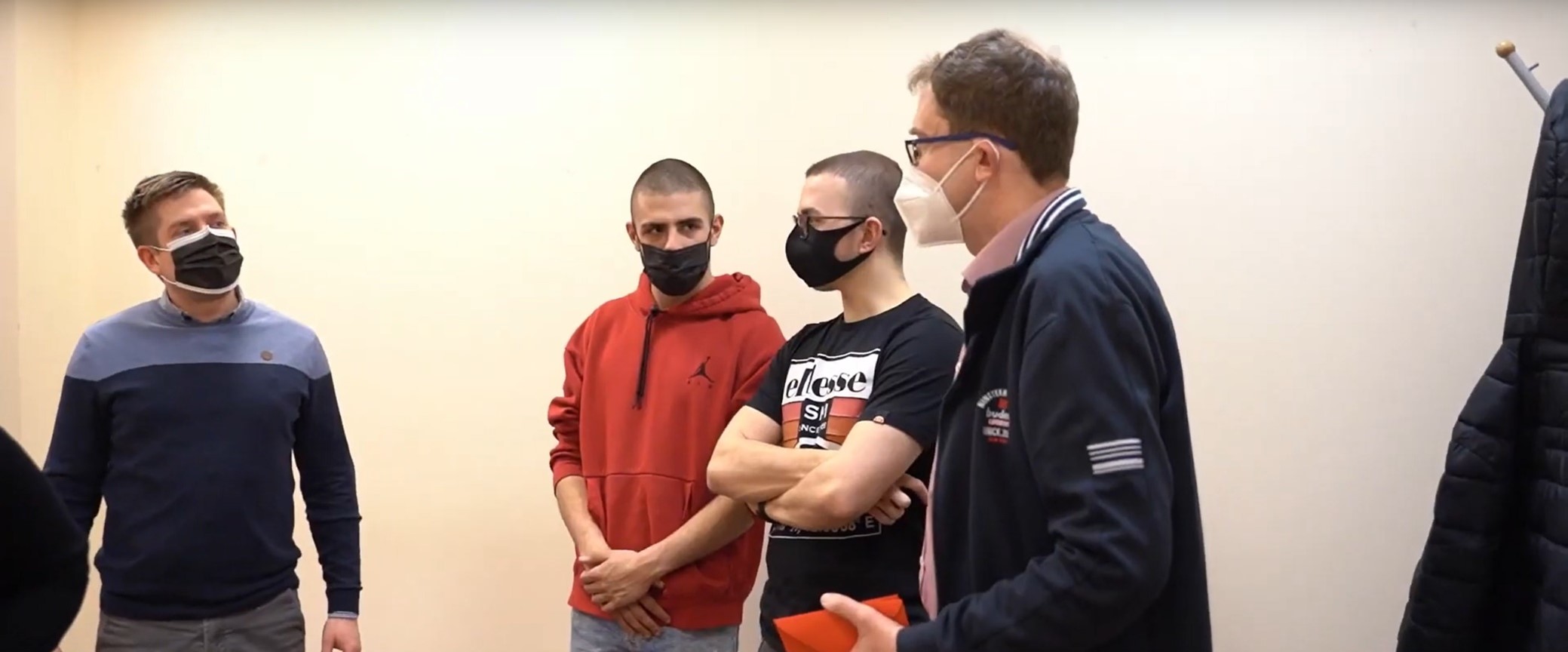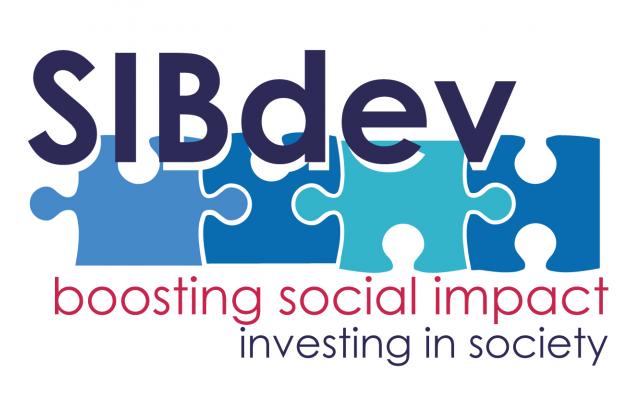|
NETWORK
|
PARTNERS
|
DESCRIPTION
|
|
Research, technological development and innovation
|
|
UrbSecurity
|
Leiria (PT)
- Longford (IE)
- Madrid (ES)
- Mechelen (BE)
- Michalovce (SK)
- Parma (IT)
- Pella (EL)
- Unione della Romagna Faentina (IT)
- Szabolcs 05 Regional Development Association of Municipalities (HU)
|
Security and safety are two common goods and fundamental components of European democracy. This network intends to analyse strategies and concepts of urban design and planning, which could contribute to prevent segregation and anti-social behaviour. Additionally, this network wishes to co-create an integrated approach towards urban security focusing on improving citizens’ quality of life and the city’s smart, sustainable and inclusive growth towards a good living environment.
|
|
Find your Greatness
|
Alba Iulia (RO)
- Bragança (PT)
- Candelaria (ES)
- Perugia (IT)
- Wroclaw (PL)
- Võru (EE)
- Limerick (IE)
- Budafok-Tétény 22nd district of Budapest (HU)
|
The challenge is to build on the cities' opportunities. The partners of the project need to identify locally a strength, which was built as a sustainable mechanism generating urban development. The goal of this network is to explore and enhance the potential of the city, combining strategic marketing approach with innovative smart city tools.
|
|
Access to and use of ICT
|
|
DigiPlace
(previously DI4C)
|
Messina (IT)
- Botosani (RO)
- Oulu (FI)
- Portalegre (PT)
- Roquetas de Mar (ES)
- Saint- Quentin (FR)
- Trikala (EL)
- Ventspils Digital Centre (LV)
|
This network aims to set up an acceleration mechanism to enable cities to catch up the digitalisation opportunities in hard & soft infrastructure. Remove all the obstacles encountered by mid-sized cities in their digital journey: lack of strategic & global vision lack of technical and engineering capacities difficulties in incorporating the digital innovation. Municipalities need to guaranty the uptake of digital innovation by the local stakeholders: citizen and entrepreneurs.
|
|
IoTxChange
|
Fundão (PT)
- Dodoni (EL)
- Jelgava (LV)
- Nevers Agglomeration (FR)
- Razlog (BG)
- Ånge (SE)
- Kežmarok (SK)
- Åbo Akademi University (FI)
|
The objective is to encourage the creation of a network of European cities committed to the design of digitalization plans based on Internet of Things (IoT) solutions to increase the quality of life in small and medium sized EU cities, guiding us through a new age of digital transformation.
|
|
Competitiveness of SMEs
|
|
iPlace
|
Amarante (PT)
- Balbriggan (IE)
- Pori (FI)
- Pärnu (EE)
- Grosseto (IT)
- Gabrovo (BG)
- Heerlen (NL)
- Kočevje (SI)
- Medina del Campo
(ES)
- Saldus (LV)
|
This network aim to produce 10 different and unique robust economic development strategies, targeting their own genuine niches, and generating urban innovation ecosystems. City partners will focus on deepening the understanding of their own local economic strengths and establish strategic methods to revitalise their economy, adapt their city to the next economy and to future economic changes, establishing methodological bases for generate resilient cities.
|
|
Tourism Friendly Cities
|
Genoa (IT)
- Braga (PT)
- Rovaniemi (FI)
- Venice (IT)
- Utrecht (NL)
- Krakow (PL)
- Cáceres (ES)
- Druskininkai (LT)
- Dún Laoghaire Rathdown (IE)
- Dubrovnik Development Agency (HR)
|
This network aims to explore how tourism can be sustainable in medium-sized cities, reducing the negative impact on neighbourhoods and areas interested by different types of tourism to reach this ambitious aim, the project will create integrated and inclusive strategies which can keep a balance between the needs of the local community, in terms of quality of life and of services available, and the promotion of sustainable urban development at environmental, social and economic level.
|
|
Low carbon economy in all sectors
|
|
Urb-En Pact
|
Clermont Auvergne Metropole (FR)
- Bialystok Association of the Functional Area (PL)
- CIM Alto Minho (PT)
- Rouen Normandie Metropole (FR)
- Elefsina (EL)
- Galati (RO)
- Palma di Montechiaro (IT)
- Tampere EcoFellows (FI)
|
Local authorities embrace the ambitious goal to become a zero-net energy territory within the next 30 years. Thus, the aim is to define the local action plans to become zero-net (ZNE) territory by producing and delivering local, renewable and regulated sources of energy by the implementation of an energy loop which gathers all the stakeholders of this circular economy, especially the consumers included in this fair trade business in and around the metropolitan area.
|
|
Zero Carbon Cities
(previously ZCC)
|
Manchester (UK)
- Bistrita (RO)
- Zadar (HR)
- Modena (IT)
- Frankfurt am Main (DE)
- Tartu (EE)
- Vilvoorde (BE)
|
The network will support capacity building of cities to establish science-based carbon reduction targets and their Sustainable Energy Action Plans (SEAPs) aligned to Paris Agreement on Climate Change. Working with 7cities to adopt different approaches to carbon budgeting and science-based targets, the network will undertake a programme of capacity building in order to support their local activities and integrated action plan and influence Covenant of Mayors' signatory cities.
|
|
Environmental protection and resource efficiency
|
|
RiConnect
|
Barcelona Metropolitan Area (ES)
- Porto Metropolitan Area (PT)
- Krakow Metropole Association (PL)
- Paris Metropolitan Area (FR)
- Gdansk-Gdynia-Sopot Metropolitan Area (PL)
- Amsterdam Region (NL)
- Transport for Greater Manchester (UK)
- Thessaloniki Major Development Agency (EL)
|
The overall goal is to rethink, transform and integrate mobility infrastructure aiming at reconnecting people, neighbourhoods, cities and natural spaces. The project will develop planning strategies, processes, instruments and partnerships, fostering public transport and active mobility, reducing externalities and unlocking opportunities of urban regeneration with the objectives of structuring the territory, and achieving a more sustainable, equitable and attractive metropolis.
|
|
URGE
|
Utrecht (NL)
- Riga (LV)
- Oeste CIM (PT)
- Copenhagen (DK)
- Granada (ES)
- Munich (DE)
- Kavala (EL)
- Prato (IT)
- Nigrad (SI)
|
URGE (circUlaR buildinG citiEs) aims to design integrated urban policies on circularity in the building sector – a major consumer of raw materials – as there is a gap in knowledge on this topic. The result is an in-depth understanding of this theme and a first plan for a tailor-made methodology that allows the circular dimension to be widely integrated in the large construction tasks the URGE partnership is facing. URGE thus accelerates the transition towards a circular economy.
|
|
Healthy Cities
|
Vic (ES)
- Anyksciai (LT)
- Bradford (UK)
- Alphen aan den Rijn (NL)
- Falerna (IT)
- Farkadona (EL)
- Loulé (PT)
- Pärnu (EE)
- Malta Planning Authority (MT)
|
This network aims to deepen the relationship between health and the urban environment, planning actions that focus on improving the population’s health, while developing a rigorous health impact assessment methodology around it. Urban Planning can become a health generator on many grounds, and this network of cities reflects the multiplicity of possible approaches to tackle the issue: green areas, mobility, social cohesion or promotion of sports are some examples.
|
|
KAIRÓS
|
Mula (ES)
- Belene (BG)
- Cesena (IT)
- Malbork (PL)
- Roskilde (DK)
- Heraklion (EL)
- Šibenik (HR)
- Ukmergè (LT)
|
The ultimate goal is to represent a moment of change, improving the urban environment of cities involved, developing heritage-led urban regeneration. It will enhance the potential of heritage in small and medium cities developing strategies for economic and social cohesion, inclusion and sustainable urban development. This network fosters the transnational exchange of experiences to test an innovative policy framework, combining a sound integrated approach with a real transformation purpose.
|
|
Resourceful Cities
(previously UrbReC)
|
The Hague (NL)
- Bucharest 3rd district (RO)
- Ciudad Real (ES)
- Mechelen (BE)
- Cáceres (ES)
- Patras (EL)
- Oslo (NO)
- Opole (PL)
- Vila Nova Famalicão (PT)
- Zagreb (HR)
|
This network seeks to develop the next generation of urban resource centers to promote the positive economic, environmental and social impacts for the circular economy. They facilitate waste prevention, reuse, repair and recycling. The centers also work as connection points for citizens, new businesses, researchers and the public sector to co-create new ways to close resource loops at the local level.
|
|
FOOD CORRIDORS
(previously Rurban Food)
|
Coimbra Region (PT)
- Alba Iulia (RO)
- Córdoba (ES)
- Larissa (EL)
- Szécsény (HU)
- Bassa Romagna Union (IT)
- Tartu Tartumaa Arendusselts (EE)
- BSC Kranj and Gorenjska (SI)
|
Recent experience suggests that it is necessary to promote a transition towards regional food systems. This network encourage the creation of a network of European cities committed to the design of food plans that extend from the urban and periurban areas through a corridor that facilitates urban-rural re-connection. This approach enhances production and consumption environments founded on a base of economic, social and environmental sustainability, integrated into development policies.
|
|
Health&Greenspace
|
Hegyvidék 12th district of Budapest (HU)
- Espoo (FI)
- Limerick (IE)
- Messina (IT)
- Breda (NL)
- Poznań (PL)
- Santa Pola (ES)
- Suceava (RO)
- Tartu (EE)
|
As a response to the various health risks related to rapid urbanization and the densification of cities, this network project promotes health-responsive planning and management of urban green infrastructure with an overall aim to bring health and wellbeing benefits for citizens across Europe. The network applies a holistic approach that addresses the main functions provided by urban green infrastructure that deliver health and social benefits.
|
|
Sustainable transport
|
|
Space4People
|
Bielefeld (DE)
- Arad (RO)
- Badalona (ES)
- Nazaré (PT)
- Turku (FI)
- Guía de Isora (ES)
- Panevèžys (LT)
- Saint-Germain-en-Laye (FR)
- Sérres (EL)
- Valga (EE)
|
This network improves quantity and quality of attractive public spaces in urban areas. For this, it tackles the main public space use being transportation in 3 aspects: improving user experience and adding space to pedestrian networks and (semi) pedestrianised places, upscaling intermodal hubs to urban centres of mixed use as well as reducing and optimising parking in public space. The project takes a user-centric approach by users assessing and creating future use and design of public space.
|
|
Thriving Streets
|
Parma (IT)
- Antwerp (BE)
- Igoumenitsa (EL)
- Klaipèda (LT)
- Nova Gorica (SI)
- Oradea (RO)
- Santo Tirso (PT)
- Radom (PL)
- Southwark London Borough (UK)
- Debrecen Economic Development Centre (HU)
|
This is a network that addresses the bottlenecks in sustainable urban mobility. The project will focus on the economic and social benefits of sustainable mobility, rather than on the widely demonstrated environmental effects. The network argues that working with local amenities and social networks at neighbourhood level could unlock the hidden demand for active mobility in cities, and thus act as enabler of behaviour change towards more resilient and liveable neighbourhoods.
|
|
Employment protection and resource efficiency
|
|
SIBdev
|
Heerlen (NL)
- Aarhus (DK)
- Baia Mare (RO)
- Fundão (PT)
- Kecskemét (HU)
- Pordenone (IT)
- Zaragoza (ES)
- Võru Development Centre (EE)
|
This network aims to explore how social impact bonds can be used to improve public service delivery in areas such as employment, ageing, and immigration. Often, the delivery of services is hindered by fragmented and siloed agencies and budgets, financial and political shorttermism, and an aversion to risk and difficulty creating change. The social impact bond is a promising model that ameliorates these issues by increasing collaboration, prevention, and innovation.
|
|
Social inclusion and poverty
|
|
ROOF
|
Ghent (BE)
- Braga (PT)
- Glasgow (UK)
- Thessaloniki (EL)
- Liège (BE)
- Odense (DK)
- Poznań (PL)
- Toulouse Metropole (FR)
- Timisoara Department of Social Assistance (RO)
|
This project aims to eradicate homelessness through innovative housing solutions at city level. It will exchange knowledge on how to gather accurate data and make the conceptual shift from the symptomatic management to the actual ending of homelessness, with Housing First and Housing Led as guidance model. This network will guide the partner cities towards integrated local action plans linked to the long-term strategic goal of Functional Zero (no structural homelessness).
|
|
ActiveCitizens
|
Agen (FR)
- Bistrita (RO)
- Cento (IT)
- Dinslaken (DE)
- Hradec Králové (CZ)
- Santa Maria da Feira (PT)
- Saint-Quentin (FR)
- Tartu (EE)
|
The aim of this network is to rethink the place of the citizens in the local governance by finding a balance between representative democracy and participatory democracy. This network of European small and medium-sized cities, with the same expectations and similar challenges, will notably take into account, to do this, new digital tools while integrating the issue of citizens away or not comfortable with digital tools.
|
|
Access
|
Amsterdam (NL)
- Dublin (IE)
- Lisbon (PT)
- Riga (LV)
- Sofia (BG)
- Tallinn (EE)
- Vilnius (LT)
- London Greater Authority (UK)
|
This network addresses the importance of inclusive cultural policies. A challenge all cities in this project face is that culture does not enrich or empower all people equally. We need to gain a better understanding of our communities in order to engage all citizens in our cities. We have identified four topics to work on that will enable us to gain that understanding and support us in reaching all population groups in the participating cities from the west, east and south of Europe.
|
|
Genderedlandscape
|
Umeå (SE)
- Frankfurt am Main (DE)
- Panevèžys (LT)
- Trikala (EL)
- La Rochelle (FR)
- Barcelona Activa SA (ES)
- Celje JZ Socio (SI)
|
Creating conditions for gender equality through a holistic understanding of how gender inequality is created in the specific place. This network creates an exchange on challenges faced by cities with an understanding of gender inequality that is globally understood but locally contextualised.
|
|
Education, skills and lifelong learning
|
|
Cities4CSR
|
Milan (IT)
- Bratislava (SK)
- Budaörs (HU)
- Guimarães (PT)
- Molina de Segura (ES)
- Nantes Metropole (FR)
- Rijeka (HR)
- Kekava (LV)
- Sofia (BG)
-Vratsa (BG)
|
Through intensive capacity building of local actors, the network will increase collaboration among municipalities, businesses and the civic society in order to promote sustainable, inclusive & innovative urban change. The project aims at increasing the role and added value of companies’ CSR activities at local level, towards urban regeneration and social innovation, with a special emphasis on education, in order to better address emerging and unmet local needs.
|
